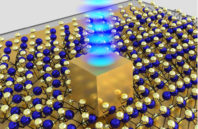Researchers at Stevens Institute of Technology and Columbia University have developed a scalable, precise method for creating large numbers of quantum light sources on a chip. These light sources could be used for quantum computers and quantum cryptographic systems. The researchers said that the method combines spatial control and scalability with the ability to efficiently emit photons on demand.
The researchers used the corners of a metal nanocube for both electric field enhancement and to deform a 2D material. This nanoplasmonic platform allowed them to study the same quantum emitter before and after coupling.
The Columbia team developed a technique for growing nearly defect-free crystals. The researchers used the crystals to build rows of quantum emitters.

 (585) 768-2513
(585) 768-2513

